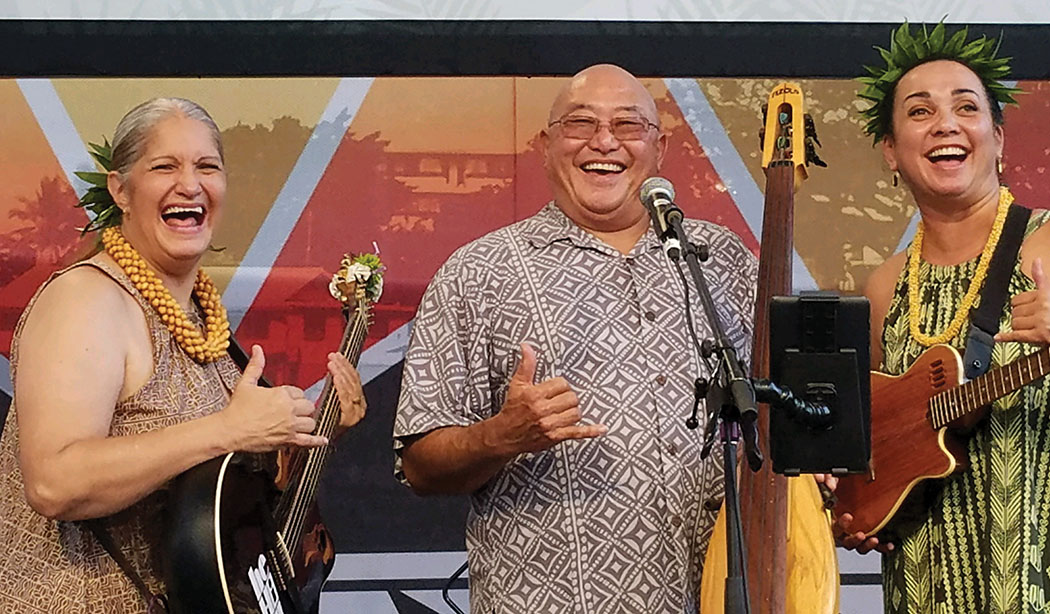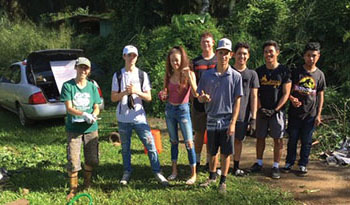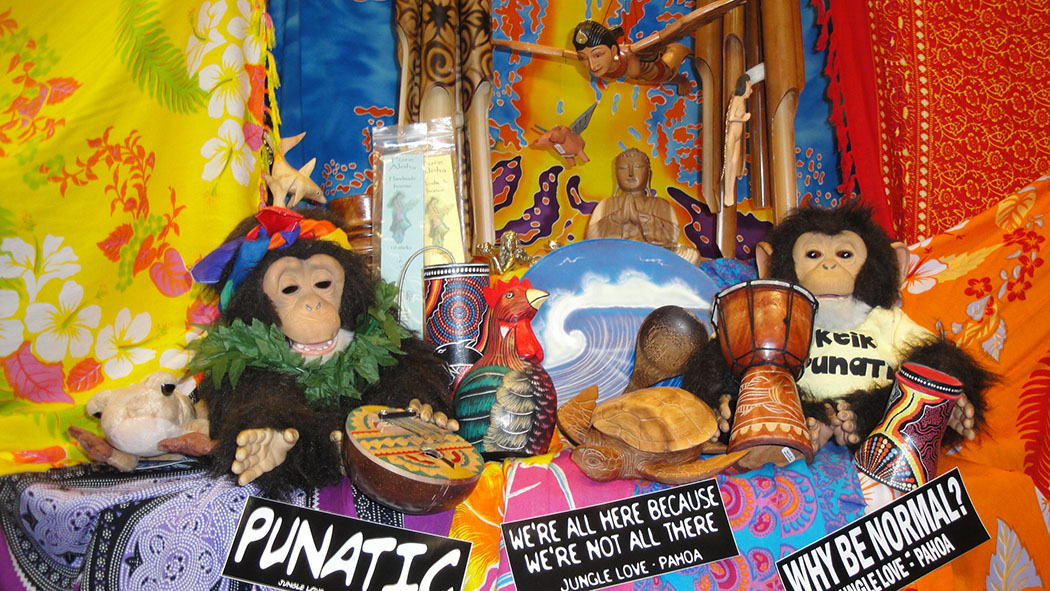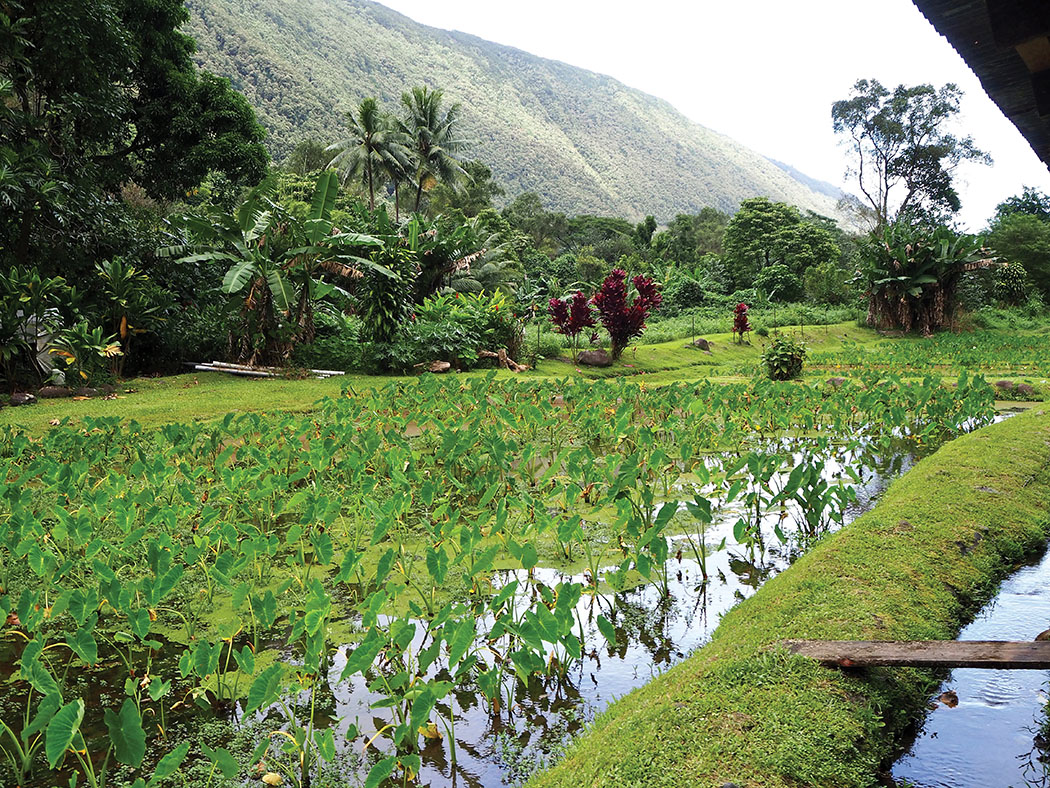
The Past is Present: Kalo Farming on Hawai‘i Island

By Brittany P. Anderson
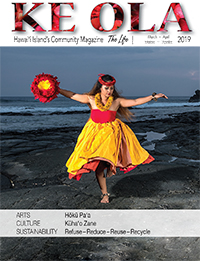
There is a story behind every plant on Hawai‘i Island. Sometimes it is a legend of betrayal, sometimes a voyage across the Pacific Ocean, or an accidental introduction to our island home. The tale of kalo is one that is unending—its history, cultural significance, and cultivation are a journey into the past with forethought on the future.
Kalo is the Hawaiian word given to the taro plant, Colocasia esculenta. It is widely documented that the number of edible kalo cultivars has decreased from an estimated 200–300 to just 90–100 different varieties grown today.
There are two main groups: wetland taro, the source of poi, which is a fermented mash from the main corm; and upland taro that is used much like potatoes for cooking. Taro’s heart-shaped leaves, slender stem, and bulbous corm are all edible; however, they need to be cooked thoroughly before eating.
Kalo was an essential food throughout the Hawaiian Islands. Considered a canoe plant, it was brought to the islands some 1,700 years ago by voyaging Polynesians. Significant aspects of Hawaiian culture formed around kalo cultivation and its consumption.
The Foundation of a Culture
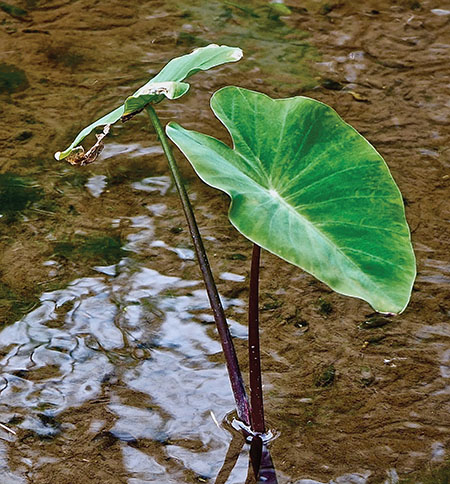
Kalo’s significance to Hawaiian culture is best understood through the Hawaiian legend of Hāloa. Wākea, Sky Father, had a son with demigoddess Ho‘ohōkūkalani; however, the baby was stillborn. The child was wrapped in kapa cloth and placed in a lauhala basket then buried on the east side of their house where he could be warmed by the sunrise each day. In her sadness Ho‘ohōkūkalani wept and chanted over the grave until a small stem grew from the gravesite.
The slender stem reached towards the sky, and a broad heart-shaped leaf unfurled, waving in the breeze as if to reassure Ho‘ohōkūkalani, “I am here sweet, mother.” Each morning a drop of water gathered in the center of the leaf like the tears Ho‘ohōkūkalani had cried for her son. This plant was named Hāloanakalaukapalili, meaning the long stem of the trembling leaf, and became the first kalo.
Ho‘ohōkūkalani gave birth to a second son, the first human, whom she named Hāloa in honor of his older brother. Hāloa, meaning eternal or long breath, was strong and healthy. He managed the land, tending to the plants that grew from his brother’s grave. The kalo plant grew and multiplied from the center corm—called ‘oha. The word ‘ohana, meaning family, is derived from the word ‘oha to describe our families as growing like kalo plants. When an ‘oha is removed from the corm, it is replanted to become the center of its own ‘ohana.
As descendants of Hāloa, there is a deeply rooted responsibility to care for the land as our history is intrinsically intertwined. Traditionally it is said poi or kalo should be present at meals as a way of honoring Hāloanakalaukapalili and keeping the spirit of the ancestors alive. Also, customarily no fighting or unkind words can be spoken with poi at the table as it would be poor manners to act such a way in front of kūpuna (elders).
That Which Feeds

Kalo is an essential connection between nature and our kuleana (duty, responsibility) to the land. Today, much of Hawai‘i Island’s kalo is grown in Waipi‘o Valley, a sacred space where mana (spiritual energy of power and strength) is palpable.
Historically, Waipi‘o supported large numbers of Native Hawaiians with at least 800 acres of kalo cultivated in the lower valley alone. After Western contact, kalo acreage decreased sharply. Today, a small group of farmers in Hawai‘i Island’s Waipi‘o Valley carry on the kalo farming tradition.
“The land that we are farming on, that goes way back to my grandfather’s place. Growing up we used to go to the farm. I was a little boy and didn’t understand the process,” Darren Gamayo says of his 1.7-acre property in the valley. Here, Darren and his wife Darde tend to four different varieties of wetland kalo—‘āpi‘i, ‘ele‘ele, uaua, and moi, all excellent for making poi.
It hasn’t always been a life of kalo farming for Darren and Darde. In the 1980s, Darren visited the property, finding most of the lo‘i (kalo patch) fallen into disrepair, overgrown and filling with sediment.
Ten years passed before Darren and his brother walked the property again and by that point it was unrecognizable from his childhood memories. “Maybe we should open the land and see if we can grow taro down in the valley again?” Darren thought out loud. After a family meeting discussing the plans and getting blessings from them all, Darren set out to grow kalo, and grow it he did. Painstakingly, Darren and his family rebuilt the infrastructure to renew the neglected kalo fields.

Ancient Hawaiians developed a sophisticated gravity-fed irrigation system based on the fundamental principle of working with nature and its natural forces, instead of against it. Wetland kalo fields are positioned next to streams or springs so just enough water is diverted into the area. Through a loose rock wall jutting into the stream, water moves into the lo‘i through an ‘auwai (canal), and back out into the stream at the bottom of the fields. Wetland kalo grows best in the slowly flowing water of the lo‘i. Here it receives cool freshwater, so the corms do not rot, and nutrients are naturally replenished.
Waipi‘o Valley is getting more popular as a tourist attraction with hundreds of travelers and locals coming down into the valley each day. “If people are hiking in the back of the valley, there are no restrooms, and so people pollute the streams,” Darde points out. “Even locals are four-wheeling over the rocks that are built to divert water into the taro fields,” Darren says. “Driving in the stream disrupts the biota—it’s like they are driving through our refrigerator,” Darde states passionately.
Those living in the valley, like the Gamayos, live off the land catching prawns in the streams and growing much of what they eat. Respecting the valley and the ‘āina (land) is vitally important to the fragile ecosystem.
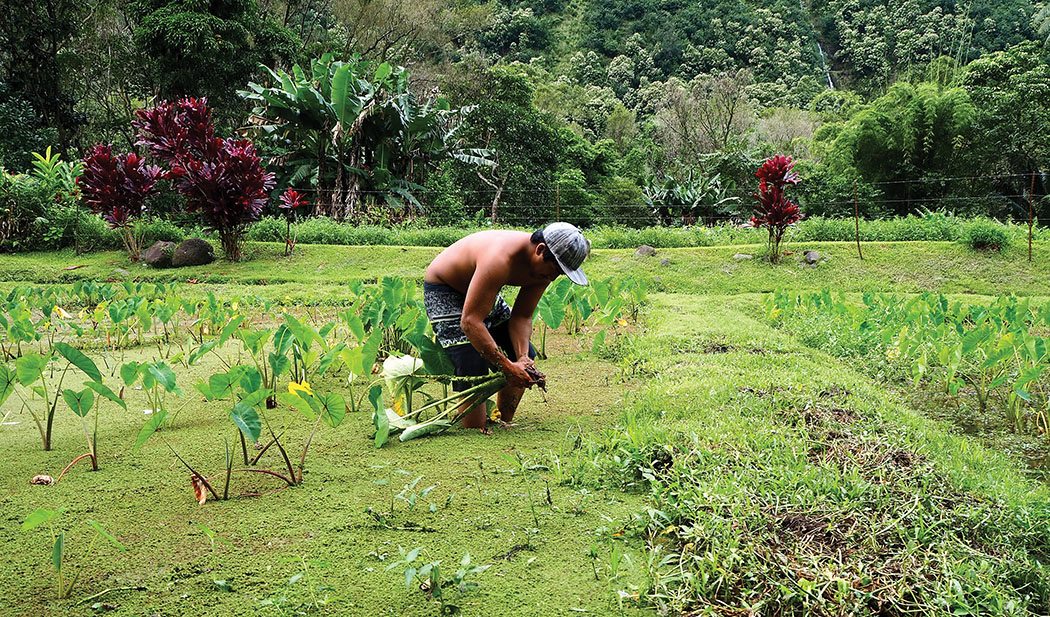
In Working One Learns
After planting their kalo patches, Darde and Darren honor their kuleana (respectful responsibility) to educate others on the traditional Hawaiian practice of growing kalo.
Working in the kalo field is essential when learning about this powerful plant. “For elementary school children to our kūpuna, kalo patches offer educational opportunities. Many of our island kūpuna have never been down into Waipi‘o Valley, and offering keiki [children] the chance to understand the history, culture, and native agriculture in Waipi‘o can help to preserve the land for generations.” Darde says.
Opportunities to learn and work with both upland and wetland kalo continue to increase across Hawai‘i Island and abroad. Darde’s son, Buku, plucked several kalo from their flooded field demonstrating the family’s propagation methods. “You cut just below the root starts,” Buku swiftly chopped, severing the green top from the palm-sized corm.
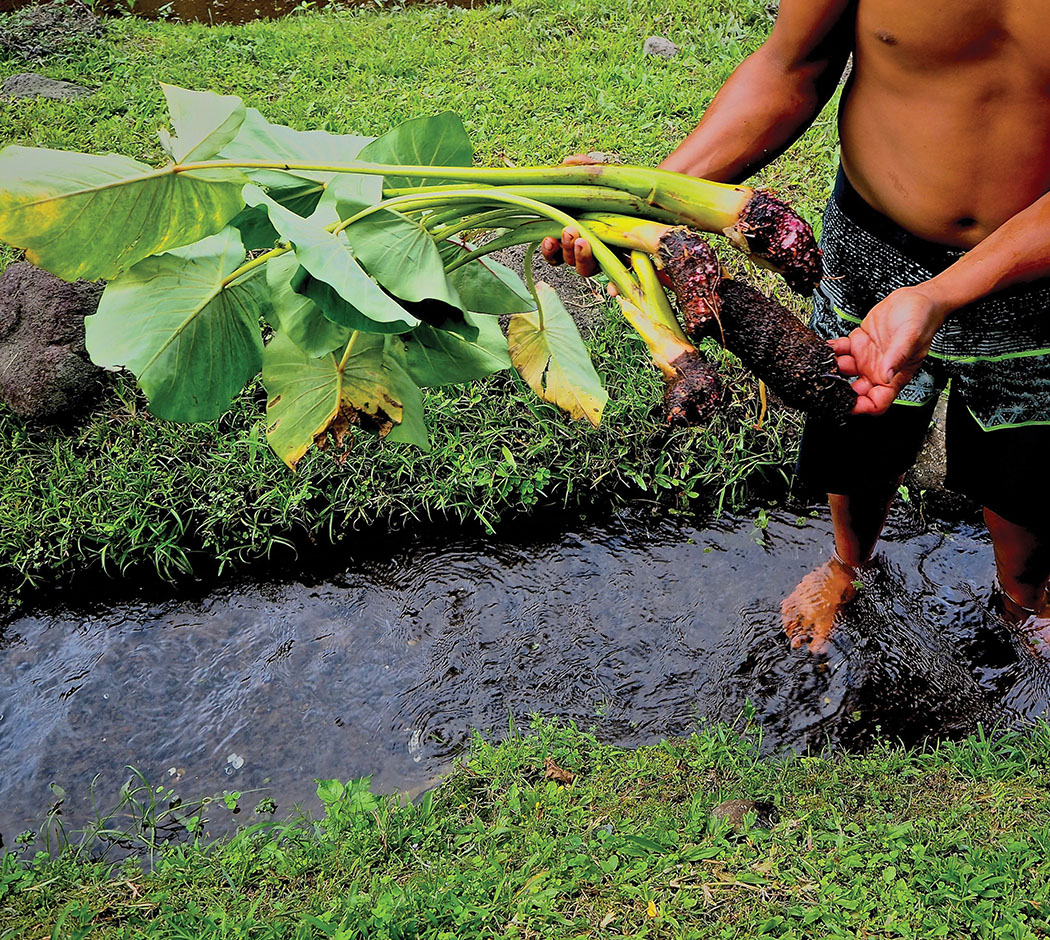
The Gamayo family hosts University of Wisconsin students from The Living History of the Big Island course each year. The students come and learn kalo farming, work the lo‘i, and experience kalo farming from start to finish.
After harvesting several kalo, Buku prepared the tops, known as huli, for replanting. He trimmed the green leaves, lau or lū‘au, from the stalks, hā, under Darde’s watchful eye. Then, he scooped the bundle and walked back into the middle of the field. With a firm grasp of the huli base, he stuck his hand into the water, depositing the plant back in line with the other kalo. “By replanting this way, some of our taro could easily be a hundred years old,” she says as we survey the landscape with renewed respect.
Every year, Darde visits Chiefess Kapiolani’s 5th-grade class in Hilo to display the process of kalo farming and how to eat it in an everyday setting. “It isn’t just taro chips and poi,” she says with a chuckle.
Through the kalo plant, knowledge can resonate within us and inspire us to honor the Hawaiian ancestors by carrying on their values and customs. Students of Hawai‘i Island are beginning to see kalo farming as a viable future, which is what it is going to take to perpetuate these ancient traditions. There is also resurgence in utilizing canoe plants, like kalo, outside of traditional preparations. The more opportunities there are in getting our feet wet in the lo‘i, the more people will want to step into the future by connecting with the past. ❖
Photos by Brittany P. Anderson
Mahalo to Ahualoa Farm—Local Agriculture Story Sponsor
